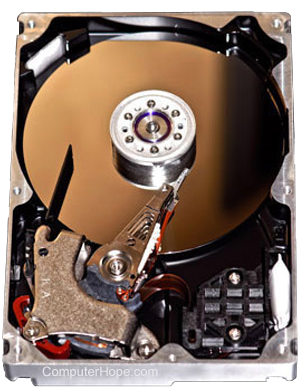Hidden partition

Sometimes called the recovery partition and restore partition, the hidden partition is a special section on OEM (original equipment manufacturer) computer hard drives. Manufacturers like Acer, ASUS, Dell, eMachine, HP (Hewlett-Packard), and IBM computers use this memory section to hold the information used to restore your computer to its factory settings. This feature is especially useful because it does not require the operating system's CD (compact disc) or DVD (digital versatile disc).
Hidden partitions are accessed through a pre-installed Windows application or by pressing a specific key combination as the computer boots up. If your computer didn't come with a hidden partition or it was deleted, you'd need to reinstall Windows with a Windows CD. However, realize this would only install Windows and have no additional software or drivers.
Accessing the hidden partition by manufacturer
Before proceeding, ensure any USB (universal serial bus) devices and drives are disconnected, and the optical disc tray is empty. Then, select your manufacturer from the list below and press the appropriate key or key combination repeatedly until your machine enters the hidden partition's menu.
- Alt+F10 - This key combination will access the Acer disk-to-disk (D2D) recovery partition. Note: you may need to enable the D2D option in the BIOS setup. See: How to enter and exit the BIOS or CMOS setup.
- F9 - Access ASUS EEE PC hidden partition.
- F10 or F11 - Access the Compaq (Hewlett Packard) recovery partition (*recommend trying F11 first).
- Ctrl+F11 or F8 - Access Dell computers' DSR (Dell System Restore).
- F11 or Alt+F10 - Access the eMachine option to restore a backup copy.
- F11 - Access Gateway hidden restore partition.
- F11 - Access Lenovo hidden recovery partition.
- F10 - Access Sony hidden restore partition.
- 0 (zero key) or F8 - Access Toshiba hidden partition.
Non-destructive or full system restore?
If your computer has a non-destructive system restore option (or something similarly named), we suggest trying it first. A non-destructive system restore may resolve Windows-related problems without erasing your files, such as family photos. If you must use a full system restore, save anything you do not want erased, as this process eradicates everything except for the basic operating system.
D2D, DSR, Factory settings, Hard drive terms, HPA, Operating system, Partition, Restore disk
